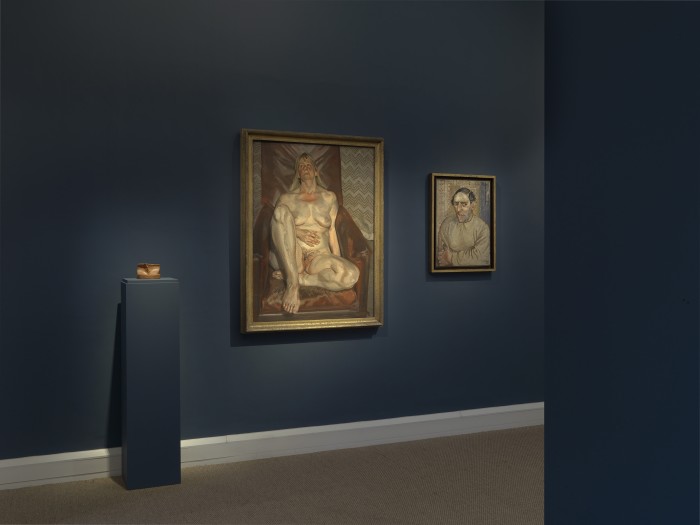Luxembourg & Dayan is pleased to announce ‘A Not So Still Life’, an exhibition of two significant late paintings by Lucian Freud (1922–2011), presented alongside other modern works in juxtapositions that invite new associations and insights into the art of a 20th century master.
Lucian Freud created an entirely new genre in the depiction of the human figure. His ‘naked portraits’ present subjects as pure animal forms not dissimilar from inanimate still life objects, while at the same time rendering painted flesh with an extraordinary, penetrating humanity. ‘A Not So Still Life’ presents Freud’s late large paintings ‘Naked portrait in a red chair’ (1999) and ‘David and Eli’ (2003–4). By turns clinical and intimate, stark and tender, the works resulted from weeks of intense sitting by and scrutiny of the artist’s subjects. While the woman in the first portrait goes unnamed, the second picture identifies Freud’s two most constant companions: his long-time studio assistant and friend David Dawson, and his whippet Eli. Both paintings evidence Freud’s almost ruthless process of observation and forensic reckoning of the human body. “Living people interest me far more than anything else,” Freud stated. “I’m really interested in them as animals. The one thing about human animals is their individuality: liking to work from them naked is part of that reason, because I can see more.
‘A Not So Still Life’ anatomises the compositions of Freud’s paintings, dissecting and mirroring their elements through juxtapositions with works by other great artists. Marcel Duchamp’s 1951 sculpture ‘Feuille de vigne femelle (Female Fig Leaf)’ relates to Freud’s frontal depiction of female genitalia; Max Beckmann’s 1930 painting ‘Hunde (Dogs)’ echoes Freud’s work through its canine motifs and criss-crossing furniture; the German Neue Sachlichkeit artist Eugen Knaus’ ‘Gummibaum (Rubberplant)’ (1931) corresponds through its depiction of foliage; and Otto Dix’s portrait ‘Bildnis Jankel Adler (Portrait of Jankel Adler)’ (1926) seems to present a continuation of the wallpaper back-drop of Freud’s studio. These works translate the gallery space into a mise-en-scène of Freud’s paintings, encouraging a rare dialogue between his work and that of other twentieth century artists, and ultimately highlighting the uniqueness of his vision.


